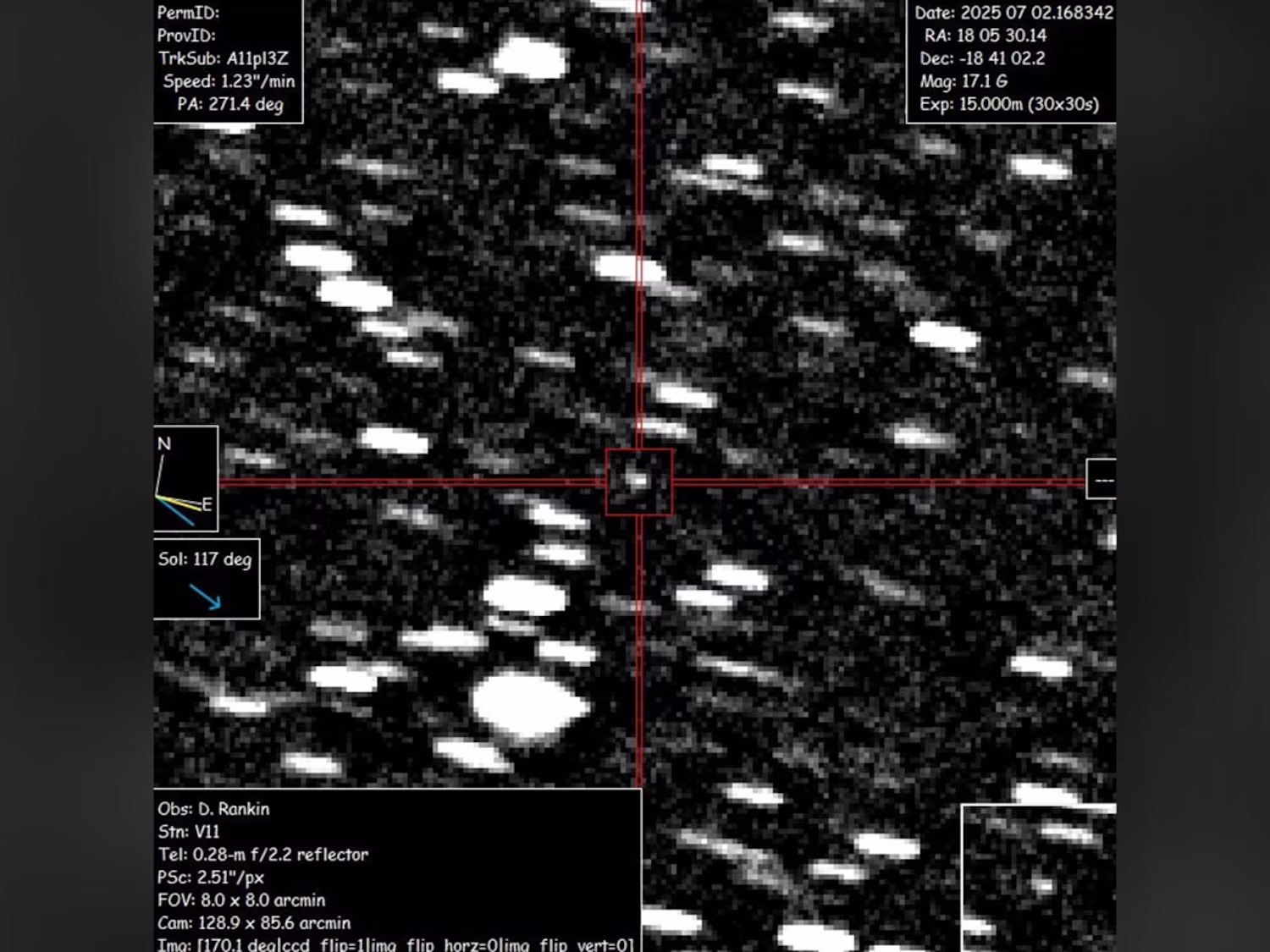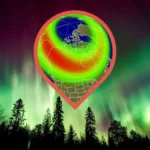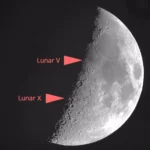The vast expanse of our solar system is not entirely insular. Occasionally, celestial wanderers from truly distant realms make a fleeting appearance.
Astronomers have recently confirmed the presence of a new “interstellar object” that is currently “speeding toward the inner solar system, where Earth is located.” This remarkable discovery marks only the “third time in history that an object from outside the solar system has been found” making such a journey into our cosmic neighborhood. This rare event provides an invaluable opportunity for scientists to study material originating from another star system, offering unprecedented insights into the diverse compositions of exoplanetary environments.
This particular interstellar visitor, which is “likely a comet,” was first detected through data gathered by the Asteroid Terrestrial-impact Last Alert System (ATLAS). ATLAS, an asteroid impact early warning system, operates from its facility in Rio Hurtado, Chile. Its operations are significantly funded by NASA, the leading space agency. The initial detection was announced by NASA on a Tuesday, immediately sparking excitement within the astronomical community. The characteristics observed, such as a “marginal coma and short tail,” strongly suggest “signs of cometary activity,” according to expert analysis from the Minor Planet Center.
This cometary nature implies it’s composed of ice and dust, unlike the more rocky interstellar object, Oumuamua, discovered earlier. The detection of such an object underscores the critical role played by ground-based observational networks in monitoring our dynamic celestial environment and identifying objects that traverse vast cosmic distances.
Tracing Its Path: Detection and Observations
The initial detection of this interstellar comet, officially designated “A11pl3Z” or “3I/ATLAS,” was quickly followed by a flurry of observations from astronomical facilities worldwide. NASA confirmed that “numerous telescopes have reported additional observations since the object was first reported,” contributing to a robust dataset that helps confirm its interstellar origin and refine its trajectory.
Key to consolidating the evidence were observations dating back to June 14. Data from “three different ATLAS telescopes around the world,” complementing the initial Chilean detection, provided crucial information. These global ATLAS sites work in concert to offer continuous sky coverage. Additionally, observations from the Zwicky Transient Facility at the Palomar Observatory in San Diego County, California, further supported the comet’s existence and characteristics.
A NASA update released on a Wednesday specifically highlighted that the combined data from these diverse observatories “supports the existence of the comet.” This collaborative effort among international observatories is vital for quickly confirming and tracking transient celestial events like interstellar visitors, where every observation point adds to the precision and reliability of the data. The rapid sharing of information and coordinated observation efforts demonstrate the efficiency of the modern astronomical network in responding to such rare and significant discoveries, allowing scientists to piece together a comprehensive understanding of the object’s journey and properties.
Interstellar Origins and Current Trajectory
The trajectory of Comet 3I/ATLAS strongly suggests an origin far beyond the gravitational influence of our Sun. According to NASA’s analysis, the comet “appears to be originating from interstellar space.” Its approach vector is particularly interesting, as it is “arriving from the direction of the constellation Sagittarius.” Sagittarius is a region rich with stars, gas, and dust, including the galactic center, suggesting the comet may have been ejected from a star system located within or near this dense stellar environment.
Currently, the comet is positioned at a considerable distance from our planet, estimated to be “about 420 million miles from Earth,” according to NASA. This vast separation ensures that the object poses absolutely “no threat to Earth” or any other planet within our solar system. Astronomers have emphatically stated that the comet “will remain at a distance of at least 150 million miles” from Earth throughout its closest approach. This significant buffer provides ample safety and allows for observation without concern.
The comet’s journey will see it continue towards the Sun, reaching its “closest approach to the Sun around October 30.” At this point, it will cross at a distance of approximately “130 million miles away,” placing it just “inside the orbit of Mars,” as confirmed by NASA. This perihelion pass will be a critical period for observations, as the Sun’s heat will likely increase its cometary activity, making it brighter and potentially revealing more details about its composition and structure.
The combination of its interstellar origin, its safe trajectory, and its upcoming close approach to the Sun makes 3I/ATLAS an exceptionally valuable subject for astronomical study, providing a unique opportunity to sample the building blocks of another stellar system without ever leaving our own.
Dimensions and Velocity: A Cosmic Wanderer’s Profile
Further details emerging about the interstellar object, 3I/ATLAS, paint a clearer picture of this cosmic wanderer. Josep Trigo-Rodriguez, a respected astrophysicist at the Institute of Space Sciences near Barcelona, Spain, provided an estimate of its size to The Associated Press. According to Trigo-Rodriguez, the object, designated “A11pl3Z” or “3I/ATLAS,” “spans approximately 25 miles.” This makes it a significantly large cometary body, considerably bigger than many of the comets originating from within our own solar system. Its substantial size will make it easier to observe and study as it continues its journey.
In terms of its motion, the comet is truly a speed demon of the cosmos. Live Science reported that it’s traveling at an astonishing velocity of “about 152,000 mph.” This incredible speed is far beyond what could be attained by an object gravitationally bound to our Sun. Its approach towards the inner solar system is notable, as it is coming “from the bar of the Milky Way.” The galactic bar is a dense, elongated structure of stars at the center of our galaxy, suggesting the comet could have been ejected from a star system within this dynamic region.
The most compelling evidence for its interstellar origin comes from its trajectory. As EarthSky.org clearly points out, the comet’s “trajectory suggests it did not originate in this solar system.” Objects gravitationally bound to the Sun follow elliptical orbits.
An object with a hyperbolic or unbound trajectory, such as 3I/ATLAS, indicates that it has enough velocity to escape the Sun’s gravitational pull and likely arrived from deep space. Its path does not trace back to any known part of our solar system’s formation or orbital mechanics. This conclusive evidence of an unbound trajectory solidifies its classification as an interstellar object, making its size and incredible speed all the more fascinating for astronomers eager to understand the composition and dynamics of stellar systems beyond our own.
Previous Interstellar Visitors: Oumuamua and Borisov
The discovery of Comet 3I/ATLAS is a momentous occasion in astronomy because it represents a rare occurrence. Indeed, it is “only the third time in history that an interstellar object entering the inner solar system has been recorded.” This exclusivity underscores the unique nature of these events and the exceptional circumstances required for such objects to be detected as they pass through our cosmic neighborhood.
The first such interstellar visitor to gain widespread public attention was a peculiar, cigar-shaped object named “Oumuamua.” Discovered in 2017, Oumuamua quickly captured the imagination of scientists and the public alike due to its unusual elongated shape and its clearly hyperbolic trajectory, confirming its origin from outside our solar system. Its name, “Oumuamua,” is the Hawaiian word for ‘scout’,” perfectly reflecting its role as a trailblazer from another star system. Unlike 3I/ATLAS, Oumuamua did not exhibit any cometary activity, leading to speculation about its composition and whether it was an asteroid or something even more exotic. Its fleeting presence left many questions unanswered.
The second confirmed interstellar object was discovered in 2019 and was named “2I/Borisov.” This object was definitively identified as “a comet,” complete with a distinct coma and tail, indicating its icy composition. Its cometary nature made it similar to the newly discovered 3I/ATLAS. Borisov’s trajectory also definitively showed that it “likely strayed from another star system,” ejected by gravitational interactions or stellar events in its home system.
Both Oumuamua and Borisov provided groundbreaking data, confirming that interstellar space is not empty but occasionally harbors wanderers from other stellar nurseries. The arrival of 3I/ATLAS now adds a third, valuable data point, allowing astronomers to compare and contrast the properties of these rare visitors and gain a richer understanding of the processes that create and eject material across vast interstellar distances. Each discovery builds upon the last, painting a more complete picture of the dynamic universe beyond our Sun.
The Observational Window: What’s Next for 3I/ATLAS
Astronomers are now racing against time to gather as much data as possible on Comet 3I/ATLAS before it becomes too challenging to observe. NASA has outlined the immediate observational plans for this unique interstellar visitor. Scientists “will continue to investigate the size and physical properties of the comet through September.” This period is crucial for utilizing various telescopes and instruments to collect spectroscopic data, analyze its light curve, and precisely map its trajectory.
Researchers will be looking for clues about its chemical composition, the density of its nucleus, and the rate at which it’s outgassing material as it approaches the Sun. This information can reveal details about the environment in which it formed in another star system.
However, the observational window for this phase is limited. After September, the comet will gradually move too close to the Sun in the sky, making it increasingly difficult to distinguish from the Sun’s glare. NASA confirmed that after this period, “it will pass too close to the sun to remain visible” from Earth-based telescopes due to the overwhelming brightness. This “solar conjunction” effectively hides the comet from view for a period.
Despite this temporary disappearance, astronomers are optimistic about its reappearance. NASA confidently predicts that the comet “is expected to reappear on the other side of the Sun in early December.” Once it emerges from behind the Sun, it will begin its journey back out of our solar system, providing another opportunity for observations as it recedes into interstellar space. This second observational window, albeit at a greater distance, could offer further insights into its behavior after its closest solar approach.
The fleeting nature of these interstellar visits makes every moment of observation precious, and the astronomical community is undoubtedly mobilizing every available resource to maximize the scientific return from this rare cosmic encounter, adding vital data to our understanding of the universe beyond our immediate stellar neighborhood.








